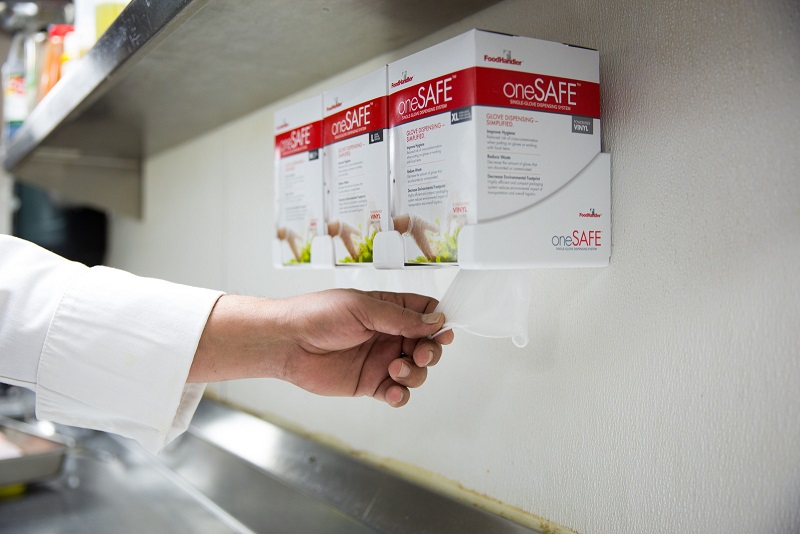How Effective is Your Food Safety Training?
 Basic food safety in a restaurant kitchen is not rocket science, but critically important for the crew to take the time to learn about it and for managers to set the example each day. Customers never expect or want to see a manager, chef, or a crew member make a very visible food safety mistake, like not washing hands before food prep and gloving, or touching their face or hair while prepping or handling food. Have we all seen it happen in our restaurant or as a customer elsewhere? Certainly. Are you using some creativity in your current training methods to help your staff “get it” so to speak, and reflect positive behaviors regarding food safety?
Basic food safety in a restaurant kitchen is not rocket science, but critically important for the crew to take the time to learn about it and for managers to set the example each day. Customers never expect or want to see a manager, chef, or a crew member make a very visible food safety mistake, like not washing hands before food prep and gloving, or touching their face or hair while prepping or handling food. Have we all seen it happen in our restaurant or as a customer elsewhere? Certainly. Are you using some creativity in your current training methods to help your staff “get it” so to speak, and reflect positive behaviors regarding food safety?
Effective food safety programs tap the psychology of how people learn and make the education fun. Your well thought out training methods might also help reduce the employee turnover. Illustrate your points to the crew with real life examples from your experience and use humor. You can even use past mistakes to make a point. Food safety knowledge is such an important factor to a restaurant’s success, but think of the old simple adage about learning:
TELL ME > I’LL FORGET;
SHOW ME > I’LL REMEMBER;
INVOLVE ME > I’LL UNDERSTAND.
For each basic concept in food safety, teach the crew “who, what, where, why, and when”. Sometimes managers stop at the “show me” step and don’t take the time to involve the veteran crew along with a new crew member—particularly on the most simple food safety concepts like portioning, handwashing, when to use gloves, how to clean a piece of equipment, using a thermometer and learning what are the correct temperatures. Use colorful signage, online basic training, videos, or workbooks to read, but don’t stop there.
Positive Reinforcement — Have you done a fun verbal quiz lately with your crew about what are the correct temperatures for your foods? Do YOU know them and are they posted in the prep area? Positive reinforcement affects behaviors the most, even though behavioral changes are difficult. Rewards/recognition for any training is needed with ongoing participation by management and employees. Examples & key tips:
- REMEMBER – You get ALOT more with sugar than a baseball bat…
- Any kind of recognition & daily—become watchful to catch the good actions
- Team building skills are needed in food service—the veterans need reinforcement too
- Mention of their good practices on a colorful bulletin board
- Newsletter mention or local newspaper article about training of group
- Certificates of training or a “leader” job title
- Ask the local health department for training assistance—usually it’s free & onsite
- Monetary rewards, movie passes, or any kind of incentives if possible
- THANK YOUS! They’re A Biggie!!
Bottom Line: There are plenty of options out there for manager certification and crew level training that is well worth the cost. Check out new online options to save time and dollars. Most employees are not computer-phobic with a little help from their management. The crew needs direct involvement in the food safety learning process – NOT JUST DO AS I SAY. Think a bit like a customer and then, do even more to make that customer notice good food safety practices through the actions of your well trained crew!
***
About the Author: Lacie Thrall

This information is provided as a general guideline and is not intended to be, nor does it, constitute legal or regulatory advice. Additional Federal regulations may apply to your particular circumstances. State, regional and local laws, ordinances and regulations may also apply.
READ MORE POSTS
Quat Binding – Why this Can Have a Disastrous Impact on Your Sanitation Program.
In June, I had the opportunity to represent FoodHandler and speak on food safety behavior for customers of Martin Bros. Distributing in Waterloo, Iowa. One of the questions that was asked caught me a little off guard. The question was about quat binding. It caught me off guard not because it was a bad question, but only because it was not something I had previously been asked nor had not yet been exposed to the phenomenon. However, I soon learned that in certain jurisdictions, it is resulting in changes to how sanitizing cloths are to be stored in sanitizing buckets (or not) in the foodservice industry. When I returned home from the trip, I had to dig into it to learn about what quat binding is and how it might impact foodservice operations.
Are Grades for Foodservice Inspections a Good Idea?
I generally try to stay away from controversial topics in my blog, but this is one I thought it might be interesting to discuss. Occasionally on my travels, I will come across a state or a local jurisdiction that requires foodservice inspection scores be posted in the window of the establishment. The idea is to allow would-be customers the ability to see how the foodservice operation in which they are about to eat scored on their latest health inspection.
Neglected Safety: CDC Report Casts Doubts on the Ability of the Foodservice Industry to Ensure Ill Workers Stay at Home
Early in June, the Centers for Disease Control and Prevention released a report outlining foodborne illness outbreaks in retail foodservice establishments. The report outlined outbreaks from 25 state and local health departments from 2017 through 2019.
Keeping Food Safe While Serving Outdoors
This afternoon I met some friends for lunch and as I drove through our beautiful downtown area in Manhattan, KS, I noticed that many people were taking advantage of the gorgeous weather and dining outside with friends. For our local community - outdoor dining is one of the remnants of COVID that we actually have come to enjoy on beautiful days. With spring in full swing and summer just around the corner, many foodservice operations are taking advantage of the warm weather by offering outdoor dining options.










